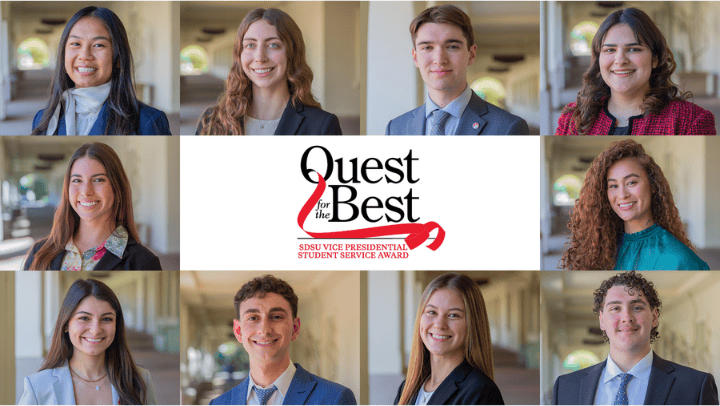Prison Arts Collective: A Forum for Expression and Connection
A former participant continues to participate in a CSU-run prison arts program long after being released from prison, facilitating a space that reminds people inside that they are not forgotten.

The article first published in the 2022 edition of Highlights: A Magazine of Research, Scholarship and Creative Activities at SDSU.
John Rodriguez was incarcerated at Ironwood State Prison when he learned about Prison Arts Collective (PAC), a program that expands access to the transformative power of the arts to people experiencing incarceration by providing multidisciplinary programming – including creative writing, music and painting.
Rodriguez thrived in PAC. Today, several years after his release from prison, Rodriguez remains involved – now as a program coordinator who facilitates PAC, helping manage relationships with prisons, train facilitators and mentor participants. PAC began in 2013 and operates in 12 California prisons with the help and expertise of faculty, students and staff throughout SDSU and several partner colleges and universities.
The program allowed Rodriguez to tap into the therapeutic benefits of art, envision a version of himself outside of prison and develop leadership skills he continues to use today.
“John brings a wealth of professional, creative and lived experience to our team and his insights add value to our programs,” said Annie Buckley, PAC founder and director. “PAC’s practice of engaging team members who represent the participants and communities in which we work has been vital to our growth and success.”
PAC is a product of Arts in Corrections, an initiative of the California Arts Council and the California Department of Corrections and Rehabilitation (CDCR), with additional funding from CDCR Innovative Program Grants and the National Endowment for the Arts.
Rodriguez shared insights about his experience with PAC, from when he first encountered the program as a participant to his time now on the staff.
What interested you in PAC and why did you get involved?
I had participated in some remote learning while in prison, but never anything in person. PAC was an opportunity to be a real student, in a classroom again with the ability to raise my hand, ask questions, and engage in dialogue.
Although it is an art-based program, it is much more than a space to create art. In retrospect, it validated our experiences by allowing us to create a curriculum and make choices, something we are seldom allowed while inside. It contributed to the process of building one’s sense of self because it honored our experiences and various approaches to art that are outside of the scope of academia.
Eventually you became a peer facilitator and led workshops. What did you learn from the experience?
As a facilitator, I had to learn how to step in and step out, prep ahead of time, and build around the ideas and interests of my peers – all the while doing it in a manner that was fun and accessible. That was where I saw the most growth in myself and others. We engaged in activities that were fun and creative, but underneath the material was very intentional and touched on key aspects that allowed participants to dig deep in a protective and personal way.
The more I engaged with my peers, the more I began to understand that not everyone is comfortable with talking out loud, but they were still having important and meaningful conversations – expressions that were happening through their art and leading to transformative, therapeutic breakthroughs.
When your incarceration ended, you decided to continue with PAC and join the staff. What made you want to stay?
In my first few years after being released from prison, I noticed that the outside world allows very little time to connect with yourself. It doesn’t favor honest human connection, and that is something I missed deeply from the connections I built with my former peers. That connection is the biggest reason why I wanted to stay with PAC. Once somebody is released from prison, it’s rare to see them come back because most people tend to block out that moment in their lives to move forward in life.
However, I wanted to remind the people inside that they are not forgotten. Although I’m now free, these people are still my peers and I carry them with me into the free community. Ultimately, I want them to benefit from the healing and interpersonal understandings that are found within those classrooms.
What is so transformative about the arts in a prison setting?
There is often an expectation for those who are incarcerated to somehow find rehabilitation and rebuild themselves, but resources vary by institution and not everyone has the access to programs necessary to make this happen. Yet art, in its various forms, fits the needs of many and doesn’t always require a ton of resources. Different from most programs, art allows those inside to connect with themselves, their peers, their families and the outside community in ways that are both simple and intimate. When folks make holiday cards or portraits for their families, it creates a synapse to a conversation with their loved ones.
For some, creating is a means of survival because their art is traded for necessary items. For others, it is their only tool of expression and how to make sense of their situation.



